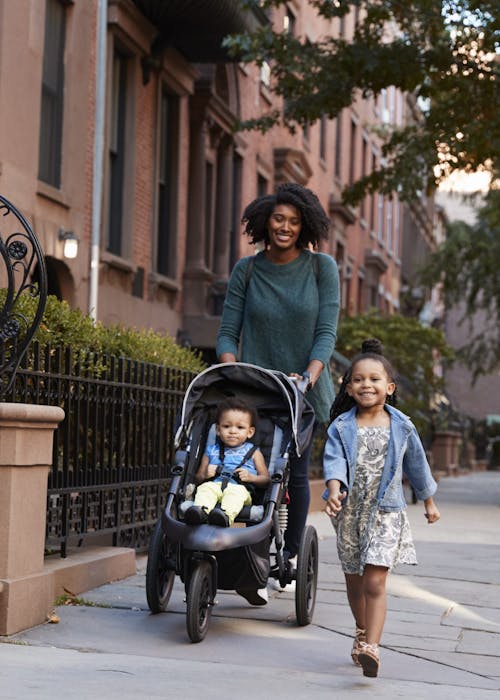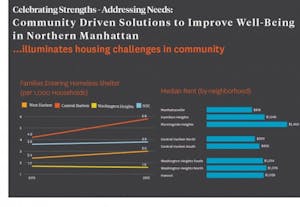
Northern Manhattan Residents Advocate for Fairer Housing Prices
Insights
May 18, 2018

Like many New Yorkers, residents of northern Manhattan have been battling rising rent prices over the last few years. The impact of soaring rent prices, however, have been especially disruptive to long-time residents in the area. Many of the residents we interviewed talked about the possibility of having to move outside of northern Manhattan as affordable rent becomes harder to find. Those who remain in the community are facing challenges related to overcrowding and the overall stressors that go along with struggling to make ends meet.
Our new report, “Celebrating Strengths, Addressing Needs: Community Driven Solutions to Improve Well-Being in Northern Manhattan,” took a look at some of the difficulties facing area residents and partnered with community members to learn what changes they hoped to see. The report found that in the midst of the challenges they face, longtime members of northern Manhattan communities expressed a deep desire to see their neighborhoods strengthened and offered critical input and ideas around effective solutions.
The report found that the median rent in northern Manhattan has skyrocketed even beyond the citywide average. In West Harlem, the median rent has gone up 37% from the 2005-2007 period to the 2014-2016 period, and in Central Harlem, the country’s fifth most gentrified community, median rents rose 27% from 2005-2007 to 2014-2016, compared to 16% citywide. At the same time as rents have risen, the number of rent-stabilized apartments has fallen. Washington Heights has a relatively high proportion of rent-stabilized units—65.7 percent, more than double the citywide average of 29.5 percent as of 2014—but this number is eroding.
Through our conversations with residents, we learned how rent-stabilized units are at-risk of conversion to market rate as landlords increase pressure on current tenants to move out so they can rent to higher paying tenants. Part of that pressure include long delays in making needed repairs, leaving families living in deteriorating conditions. Rent-stabilized units make up a smaller portion of the housing stock in West and Central Harlem compared to Washington Heights, but there too residents are concerned with the loss of rent-stabilized units.
Another deeply concerning trend is the number of families pushed into homelessness. In Central Harlem, the number of families entering shelter rose to 5.8 per 1,000 households in 2015, compared to the citywide rate of 3.8. The East Harlem rate was 6.5 in 2015, down slightly from the year before but still disturbingly high.
The lack of affordable housing has helped alter the landscape of the neighborhood in ways that are obvious to its residents. “It feels like the entire community is changing,” one interviewee said. “It started in Harlem about 10 years ago…the community loses its originality and culture.”
In some cases, the changes have resulted in improvements that residents embrace, such as cleaner streets and parks. But residents are deeply concerned about the steep social costs of those improvements.
“The community accepts beautification brought by new restaurants, but not the increase of rent for small businesses,” one interviewee explained. “The community is opposed to large developments because of fear it is for wealthy people only.”
As we developed our report, we worked with community members to suggest concrete steps local leaders can take to relieve the burdens northern Manhattan residents face and ensure they can stay in the communities they know and love. Some of the recommendations for accomplishing that include:
- Ensuring existing rent-stabilized units are preserved and creating new affordable housing opportunities for northern Manhattan residents.
- Expanding existing efforts by the city to provide free legal counsel to residents facing eviction and harassment from landlords to more zip codes in northern Manhattan.
- Increasing opportunities that will facilitate economic security, such as on-site child care services for caregivers enrolled in adult education, literacy or ESL courses.
- Creating greater access to financial literacy, economic empowerment and entrepreneurship resources for all households, especially immigrant families.
- Expanding the use of co-located services and establish “all-in-one” resource centers that could help families meet a variety of needs and desired programs to alleviate stressors related to overcrowded housing.
CCC hopes these recommendations will be used by advocates and lawmakers to shape policies that will equitably distribute resources and ensure northern Manhattan families can continue to live and work in the communities they have long called home.
